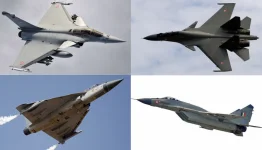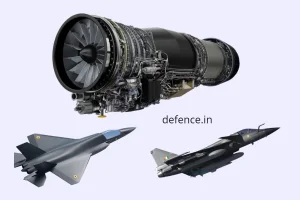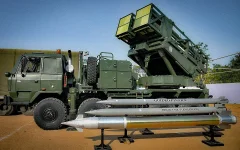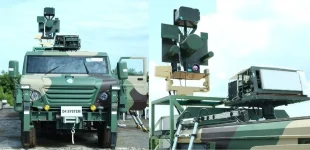- Views: 804
- Replies: 5

As unmanned aerial vehicles (UAVs) take center stage in modern warfare and surveillance, experts are calling for India to accelerate its domestic UAV manufacturing capabilities by actively involving the private sector.
While the Defence Research and Development Organisation (DRDO) is developing the indigenous TAPAS (Tactical Advanced Platform for Aerial Surveillance) MALE (Medium Altitude Long Endurance) UAV, leveraging private sector expertise could significantly boost innovation and self-reliance in this critical domain.
Relying on foreign UAV technology poses risks such as supply chain vulnerabilities, cybersecurity concerns, and potential political dependencies. Developing a homegrown MALE UAV with private sector participation can mitigate these risks and ensure India maintains complete control over its critical defence assets. This approach also allows for customization and upgrades tailored to specific national needs, free from the constraints of foreign export controls.
India's private sector has a proven track record in complex technological fields, including aerospace and defence. Companies like Tata Advanced Systems, Bharat Forge, Adani Defence, and L&T Defence possess the research and manufacturing capabilities necessary for such a project. Their involvement could inject fresh perspectives, accelerate development, and foster a competitive environment that drives innovation.
To ensure the final product remains truly indigenous, the government must maintain strict oversight on local content, preventing over-reliance on imported components. This not only enhances operational flexibility but also fosters the growth of domestic suppliers and contributes to long-term cost stability.
The DRDO's TAPAS program has laid significant groundwork for indigenous UAV technology. Sharing data, testing insights, and lessons learned from TAPAS with private sector partners can provide a strong foundation for accelerated development.
To incentivize private sector participation, the government should consider financial incentives, tax benefits, and favorable procurement policies. Funding could be structured in stages, linked to milestones achieved in indigenous technology development, ensuring that companies are rewarded for meeting local content requirements and demonstrating tangible progress.
A clear roadmap for technology transfer from the TAPAS program, with safeguards to protect intellectual property, is essential. This roadmap should also include regulatory support for the manufacturing and certification of new components in India.
Developing an indigenous MALE UAV with private sector involvement aligns with India's "Atmanirbhar Bharat" (self-reliant India) vision. This initiative could serve as a catalyst for developing other advanced technologies, such as HALE (High Altitude Long Endurance) UAVs and even stealth combat drones. By harnessing the potential of the private sector, India can accelerate its journey towards self-reliance in defence technology and cultivate a globally competitive defence industrial base.





